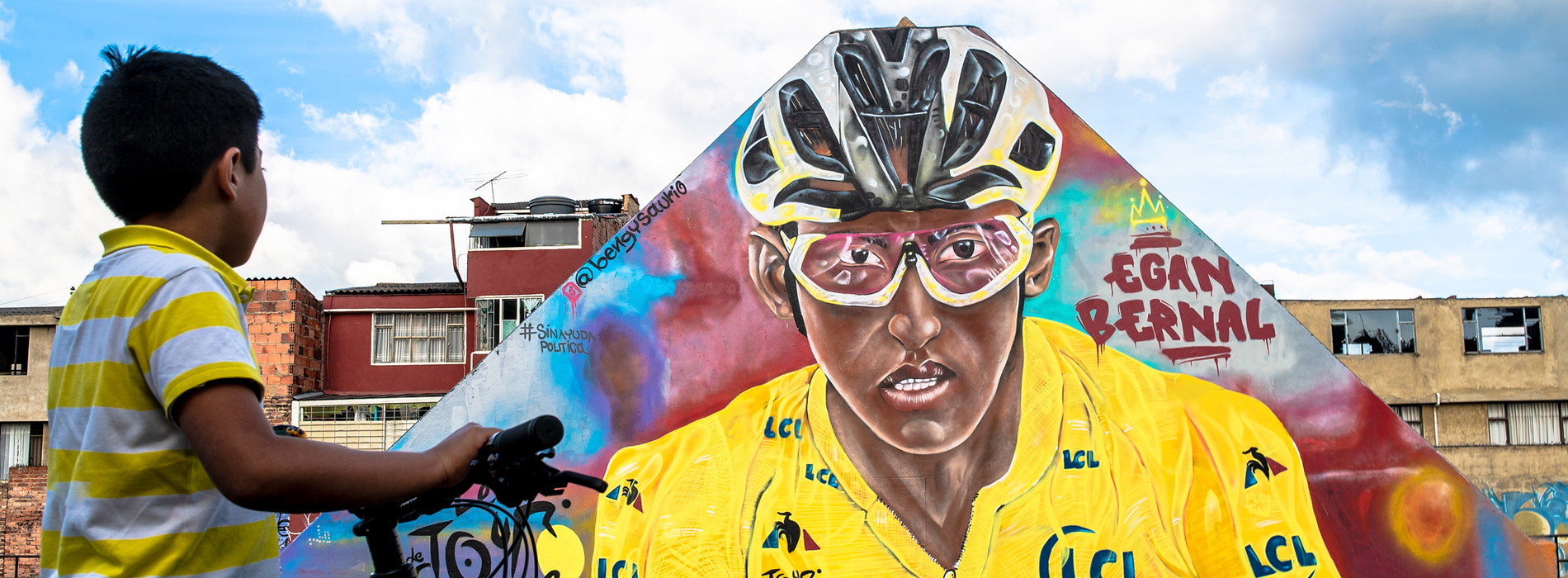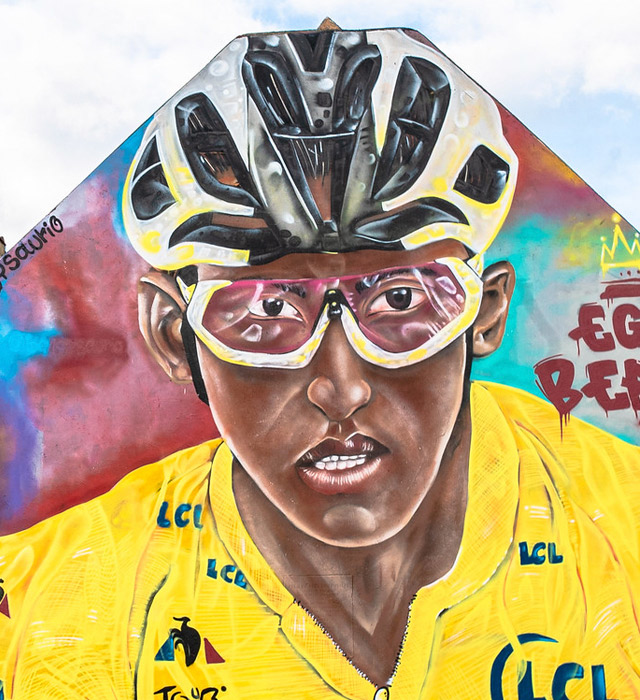



Content publication date
With the 2019 Tour de France, the eyes of the world are on Colombia. Egan Bernal, a 22-year-old born in Zipaquirá, is the first Latin American to win this cycling competition. Thanks to his work and that of other “escarabajos,” or “beetles”—a nickname for Colombian cyclists—like Nairo Quintana, Rigoberto Urán, and Sergio Luis Henao, Colombia stands strong as a cradle of exceptional athletes and a cycling tourism destination.
Bernal’s success will help solidify and promote this tourism niche in Colombia, which mainly attracts travelers from the United States and Europe. According to the World Tourism Organization and the Adventure Travel Trade Association (ATTA), bicycle tourism generates an average of US$ 57 billion per year in the Old World.
“In Colombia, cycling is more than a sport—it’s a way of life. We have the infrastructure in place to welcome all visitors who want to come train in any type of cycling,” stated Flavia Santoro, ProColombia president, who also highlights that Colombia is receiving an increasing number of foreign tourists who arrive with their bicycles in order to train.
Training in these exceptional conditions has led to great success in the largest cycling competitions, especially in mountain prizes. Six Colombians have reached the podium a total of 15 times at the Vuelta a España, the Tour de France, and the Giro d'Italia.
Colombia has superior training conditions; there are 38 routes for cyclists to pedal along while enjoying national natural parks and heritage villages throughout the country. Likewise, the bike hotel industry is booming, offering services such as a mountain bike cleaning area, bike rental, route information center, GPS rental, picnic breakfast for cyclists, repair services, and guides.
There have been major events in Colombia, such as the Giro de Rigo (2018), with 12,000 participants, including Chris Froome; the BMX World Championships in Medellín (2016); and the Track Cycling World Championships (2014). Additionally, in 2021 the International Cycling Union (UCI) Mountain Bike Marathon World Championships will be held in South America for the first time, in the city of Manizales.
1. The escarabajos (beetles), world-renowned Colombian cyclists: Colombian legends such as Martín Emilio Rodríguez, Santiago Botero, Luis Alberto Herrera, Fabio Parra, Rigoberto Urán, and Nairo Quintana are well-known names in the cycling world. They trained to be professional athletes on Colombia’s roads, the same roads that now host international tournaments. Their strengths as climbers and abilities in both mountainous and flat stages led to the creation of their nickname, the “beetles,” in the 50s. This came as a result of cycling becoming a popular sport in Colombia and the creation of the tournament known as the Vuelta a Colombia. Multiple champions of the most prestigious international cycling races have traversed some of Colombia’s roads by bicycle, including Laurent Fignon, Bernard Hinault, Greg Lemond, and recently, Chris Froome.
2. Routes that delight visitors: As the “beetles” gained international recognition, the routes where they trained to become professional athletes also began to stand out abroad. Competitions that take place in Colombia, such as El Clásico RCN and the Vuelta a Colombia, are known as some of the most challenging. Colombian tour operators offer some routes along those roads, such as the route between Colombia’s two largest cities (Bogotá and Medellín), as well as the route through the Coffee Belt, a region declared World Heritage Site by UNESCO in 2011.
3. A country that lives and breathes cycling: While traveling Colombia’s roads, it is normal to come across groups of cyclists, both professionals and amateurs, with the ability to travel routes up to 3,200 meters above sea level. In Colombia, it is common to see athletes eating typical foods such as guava paste candy and agua de panela with cheese as energy sources.
4. Diverse climates and landscapes: Because Colombia lies along the equator, ascending or descending 500 meters implies passing from one ecosystem to another. Therefore, a four-hour bike ride can provide the experience of traversing three different landscapes, going from the cold and endemic páramos to the lush high Andean forests, then ending in humid tropical rainforests.
5. A few sample routes:
Colonial villages: A five-day trip that passes through the most beautiful landscapes and the best-preserved colonial villages in the regions of Boyacá, Cundinamarca, and Santander. The route offers the experience of touring the Andes by bicycle, and is ideal for cyclists who do not necessarily consider themselves athletes.
Heroic tour: A trip only for advanced cyclists, this route is over 1,000 kilometers long, traveling through the Colombian Andes’ most spectacular landscapes. This tour includes the ascent to the mythical Alto de Letras, one of the most difficult in the world, with a climb of 85 kilometers in total.
The Coffee Route: Ideal for a road or mountain bike, the Coffee Belt is a great setting for 3- to 5-day bicycle tours, offering challenging yet enjoyable routes. The trip is ideal for reveling in the breathtaking landscape and ending each day with well-deserved rest on a coffee farm or in therapeutic hot springs.
Zipaquirá, Egan’s hometown
A one-hour trip from Bogotá, this Cundinamarca municipality stands out for its wide range of culinary, hospitality, and tourism offerings. The archaeological museum houses more than 1,400 pieces made of metal, bone, clay, and stone, as well as weavings, belonging to 14 indigenous cultures. Boasting interesting architecture, the Don Salvador Algarra House and Cultural Center was also the place of study for figures such as Nobel Literature laureate Gabriel García Márquez. The Parque de la Sal is also a noteworthy place to visit, and includes the miner's square, Brine Museum, Salt Cathedral, and nature routes.